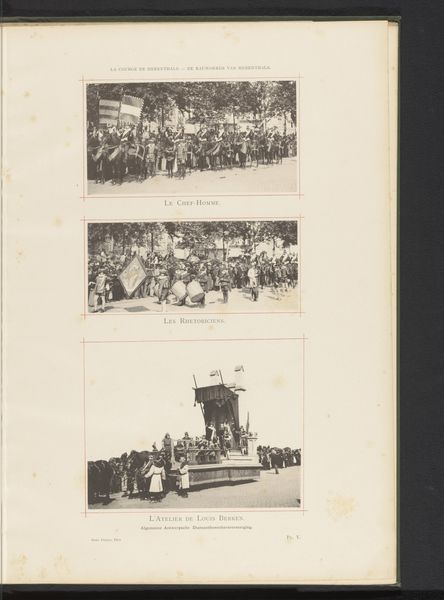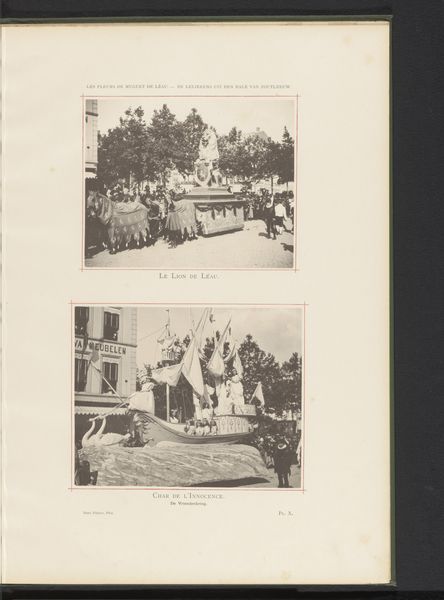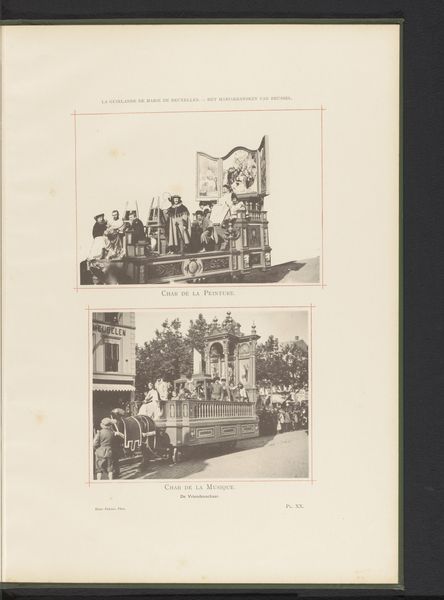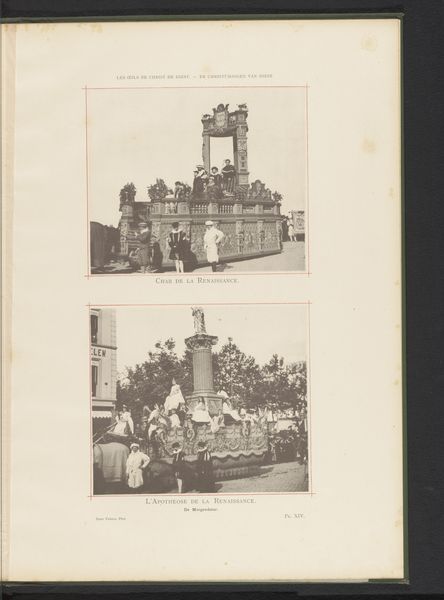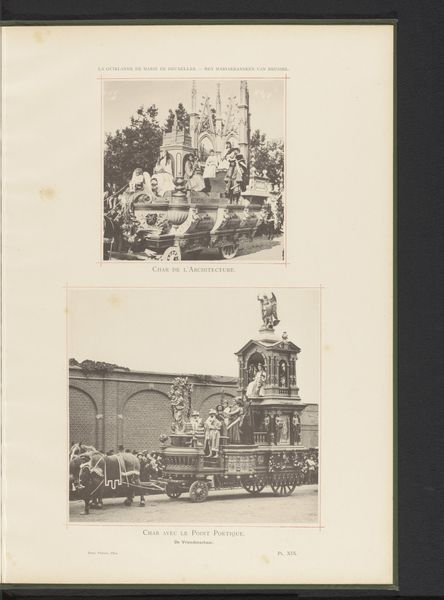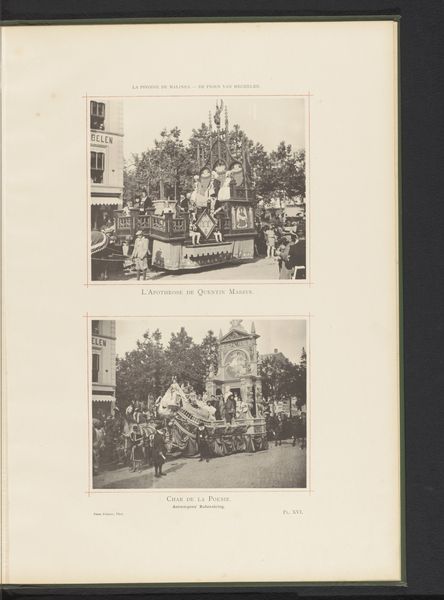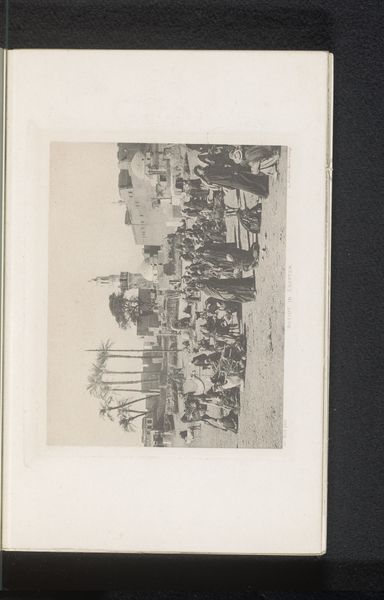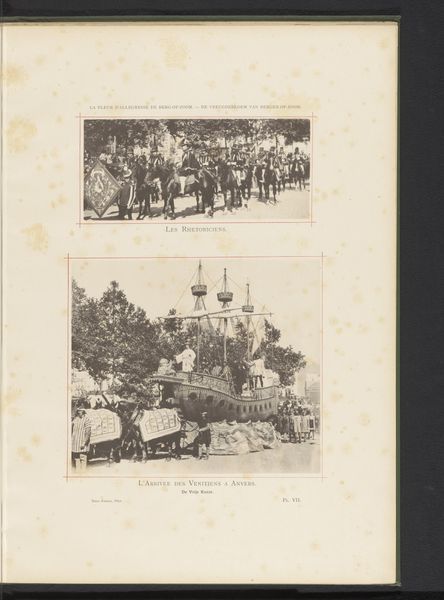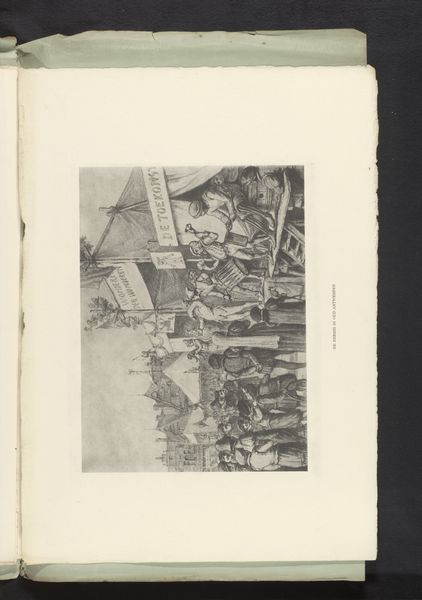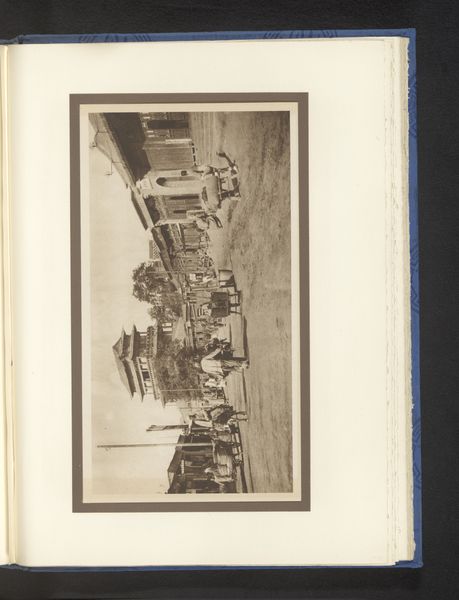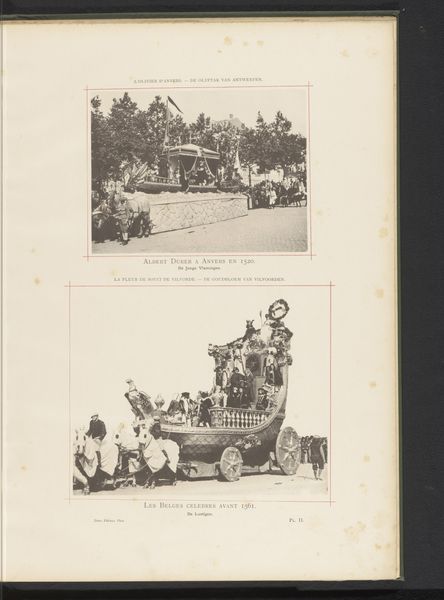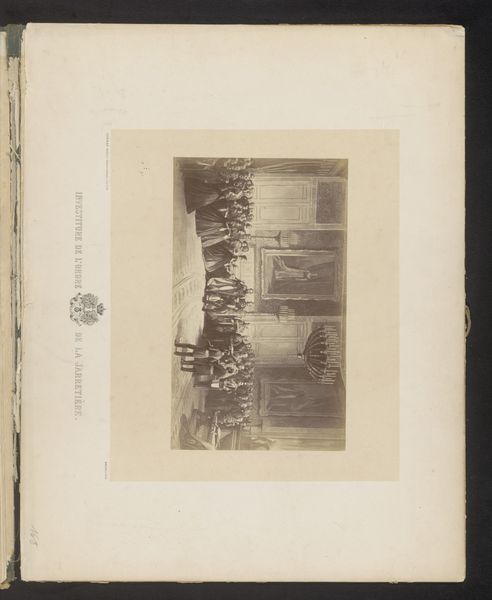
Twee gezichten op de optocht van Landjuweel ter ere van het vijftigjarig bestaan van de Academie d'Archéologie de Belgique in 1892 in Antwerpen 1892
0:00
0:00
photography
#
photography
#
cityscape
Dimensions: height 495 mm, width 352 mm
Copyright: Rijks Museum: Open Domain
Curator: This page reproduces two photographs by the Dero Brothers documenting the Landjuweel pageant held in Antwerp in 1892. It celebrated the fiftieth anniversary of the Belgian Academy of Archaeology. Editor: My initial reaction is how carefully composed and, honestly, beautiful these two photographic plates are, even printed here together on a single sheet. Look at the contrasting tonalities and forms within each rectangular field; I find it exquisite. Curator: Absolutely. It's important to remember Landjuweel was more than a parade; it was a Flemish cultural festival showcasing drama, literature, and the arts. Think of it as a powerful declaration of Flemish identity within the broader context of Belgian nationalism, with academic institutions often playing a key role. Editor: Indeed, observe in the lower plate how the dark mass of horses is precisely balanced by the canopied pavilion above—purely masterful placement to guide our eyes. And that frieze-like procession of figures! Curator: And each float represents complex allegories, reflecting the political and social aspirations of the Flemish movement at that time. For instance, the bottom image is labelled 'The Union of the Low Countries'. Note the subtle tension and how it echoes calls for solidarity and cultural revival within a rapidly changing Europe. Editor: From a visual standpoint, both compositions use a strong horizontal axis—a stable grounding broken by carefully placed vertical elements in the architecture or in the costumes of the people in each. This generates visual interest and tension in a way that complements what you point out regarding cultural tension, I believe. Curator: Exactly, and we must understand that photography itself played an important part in distributing these celebrations far beyond Antwerp's city limits. It reinforced and standardized these nationalistic ideals for wider public consumption. Editor: Yes, while it is documenting a singular occasion, what fascinates me is the universality Dero Brothers are trying to capture through balance, rhythm and tonality—elements that make these records transcend a pure, historical recording. Curator: A fascinating point—that the formal elements subtly underpinned and amplified the event's socio-political purpose. Editor: I feel they managed to construct something lasting from something inherently ephemeral.
Comments
No comments
Be the first to comment and join the conversation on the ultimate creative platform.
